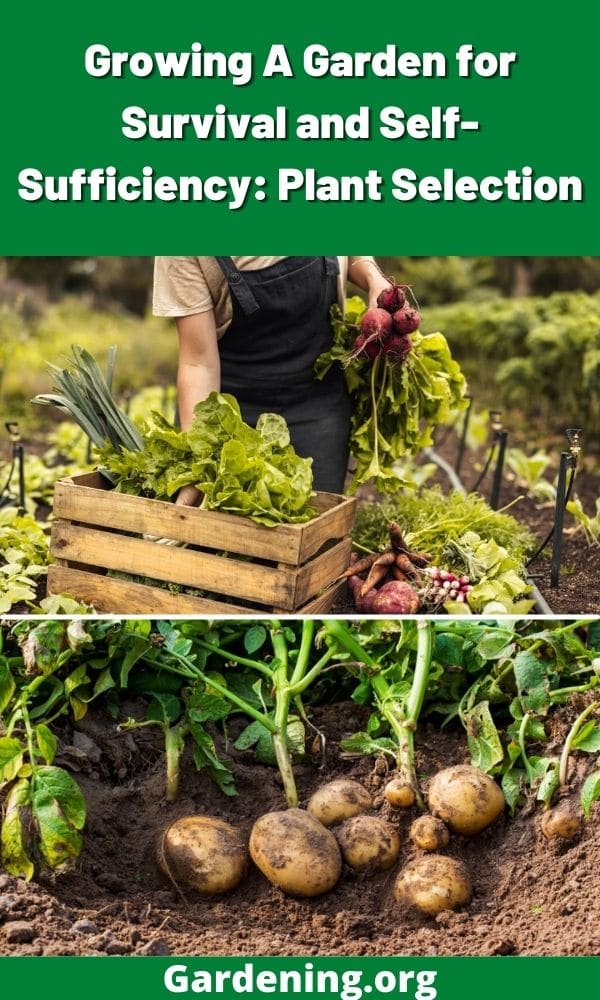Introduction
Growing a survival garden is a smart and empowering way to ensure food security during uncertain times. Whether you’re preparing for emergencies, economic instability, or simply aiming for more self-sufficiency, a survival garden can provide fresh, nutritious produce when you need it most. This guide covers everything you need to know to start and maintain a thriving survival garden, from choosing the right plants to soil preparation and ongoing care.
Why Grow a Survival Garden?
A survival garden offers several key benefits:
- Food independence: Reduces reliance on grocery stores and supply chains.
- Nutritional value: Freshly grown vegetables and herbs retain more nutrients.
- Cost savings: Growing your own food cuts down grocery bills.
- Emergency preparedness: Supplies food during power outages or disasters.
Experts such as Master Gardener Angela England emphasize that a well-planned survival garden can sustain a family in times of need, while also providing therapeutic benefits through gardening activities.
Choosing the Right Location and Preparing Your Soil
Selecting the Optimal Site
Your garden’s success starts with location. Look for:
- At least 6-8 hours of sunlight daily
- Good drainage to prevent waterlogging
- Proximity to water source for easy irrigation
Soil Preparation
Healthy soil is the foundation of a productive garden. Follow these steps:
- Test your soil pH using a kit; most vegetables thrive at pH 6.0-7.0.
- Amend soil with organic matter like compost or aged manure to improve texture and fertility.
- Till or turn the soil to aerate and break up compacted areas.
According to the USDA, soils rich in organic matter increase yield and resist disease better.
Selecting Plants for a Survival Garden
Best Crops for Survival Gardens
Choose plants that are:
- Nutritious and calorie-dense
- Easy to grow and maintain
- High-yielding with long storage life
Ideal choices include:
- Root vegetables: Carrots, potatoes, sweet potatoes, and beets
- Leafy greens: Kale, spinach, chard
- Legumes: Beans and peas for protein and nitrogen fixation
- Herbs: Basil, parsley, and thyme for flavor and medicinal uses
Companion Planting
Planting compatible crops together improves growth and pest resistance. For example, tomatoes grow well with basil and marigolds, which deter pests naturally.
Watering and Maintenance Strategies
Efficient Watering Techniques
Water management is crucial, especially during droughts. Use these strategies:
- Drip irrigation or soaker hoses to minimize water waste
- Water early in the morning to reduce evaporation
- Mulch around plants to retain moisture and suppress weeds
Pest and Disease Control
Maintain a healthy garden by:
- Regularly inspecting plants for signs of pests
- Using natural remedies like neem oil or insecticidal soap
- Encouraging beneficial insects such as ladybugs and bees
Harvesting and Storing Your Survival Garden Produce
When to Harvest
Harvest vegetables at their peak for best flavor and nutrition. For example, pick tomatoes when they are fully colored and firm.
Storage Tips
Proper storage extends the shelf life:
- Root vegetables: Store in a cool, dark, and humid place
- Leafy greens: Keep refrigerated and wrapped in damp cloth
- Dry beans: Store in airtight containers in a cool, dry area
Consider canning, freezing, or dehydrating surplus produce to build a long-term food reserve.
Conclusion
Growing a survival garden is a practical and rewarding step toward self-reliance and food security. By choosing the right location, preparing your soil, selecting suitable crops, and practicing efficient watering and pest management, you can build a garden that sustains you through emergencies and enriches your daily life. Start small, learn as you grow, and enjoy the peace of mind that comes from knowing you can provide for yourself and your family in any situation.
